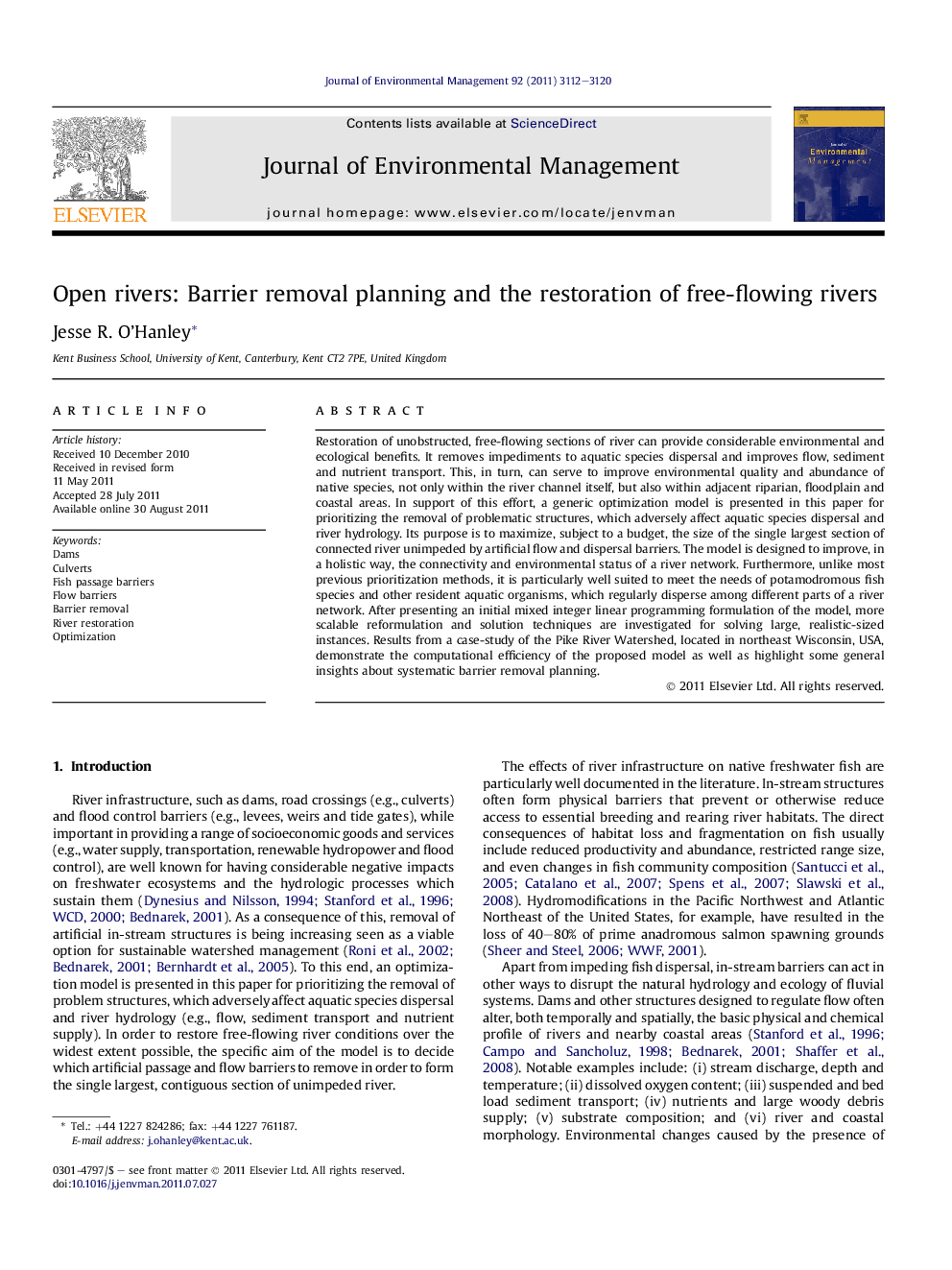| Article ID | Journal | Published Year | Pages | File Type |
|---|---|---|---|---|
| 1057115 | Journal of Environmental Management | 2011 | 9 Pages |
Restoration of unobstructed, free-flowing sections of river can provide considerable environmental and ecological benefits. It removes impediments to aquatic species dispersal and improves flow, sediment and nutrient transport. This, in turn, can serve to improve environmental quality and abundance of native species, not only within the river channel itself, but also within adjacent riparian, floodplain and coastal areas. In support of this effort, a generic optimization model is presented in this paper for prioritizing the removal of problematic structures, which adversely affect aquatic species dispersal and river hydrology. Its purpose is to maximize, subject to a budget, the size of the single largest section of connected river unimpeded by artificial flow and dispersal barriers. The model is designed to improve, in a holistic way, the connectivity and environmental status of a river network. Furthermore, unlike most previous prioritization methods, it is particularly well suited to meet the needs of potamodromous fish species and other resident aquatic organisms, which regularly disperse among different parts of a river network. After presenting an initial mixed integer linear programming formulation of the model, more scalable reformulation and solution techniques are investigated for solving large, realistic-sized instances. Results from a case-study of the Pike River Watershed, located in northeast Wisconsin, USA, demonstrate the computational efficiency of the proposed model as well as highlight some general insights about systematic barrier removal planning.
► In-stream structures often form hydrologic and fish dispersal barriers. ► A model is presented to prioritize the removal of problematic river barriers. ► The goal is to maximize the largest section of unimpeded river subject to a budget. ► The model is well suited to meet the needs of resident fish and aquatic organisms. ► The model is a generic planning tool with minimal data requirements.
